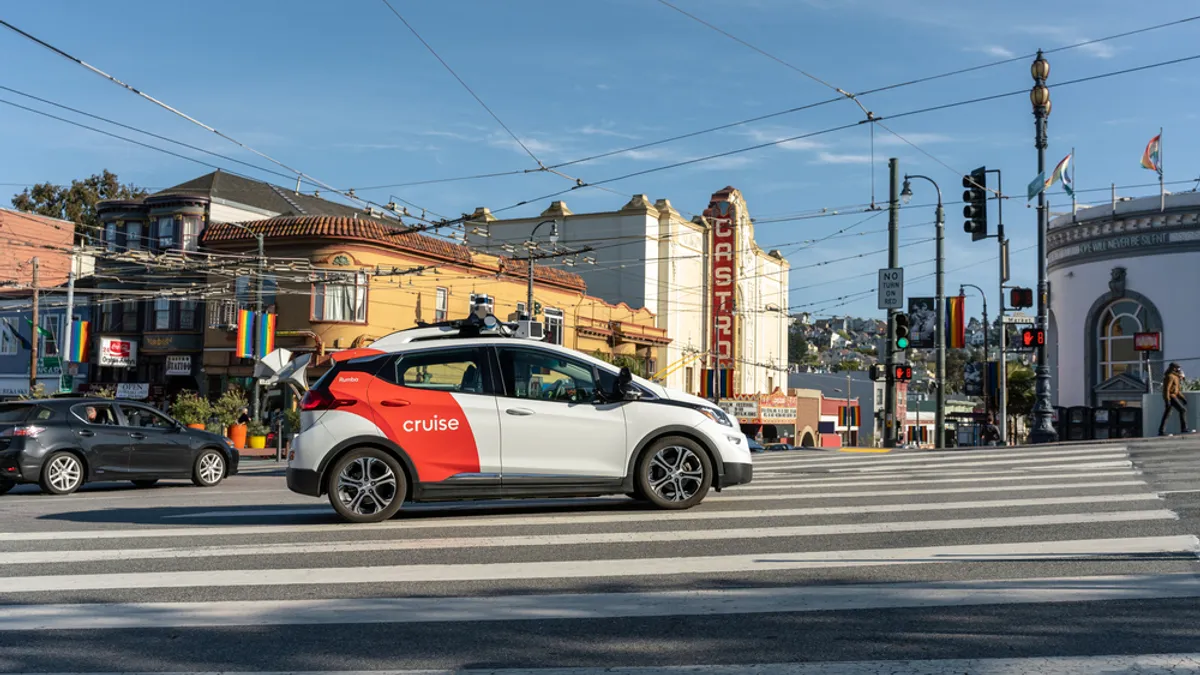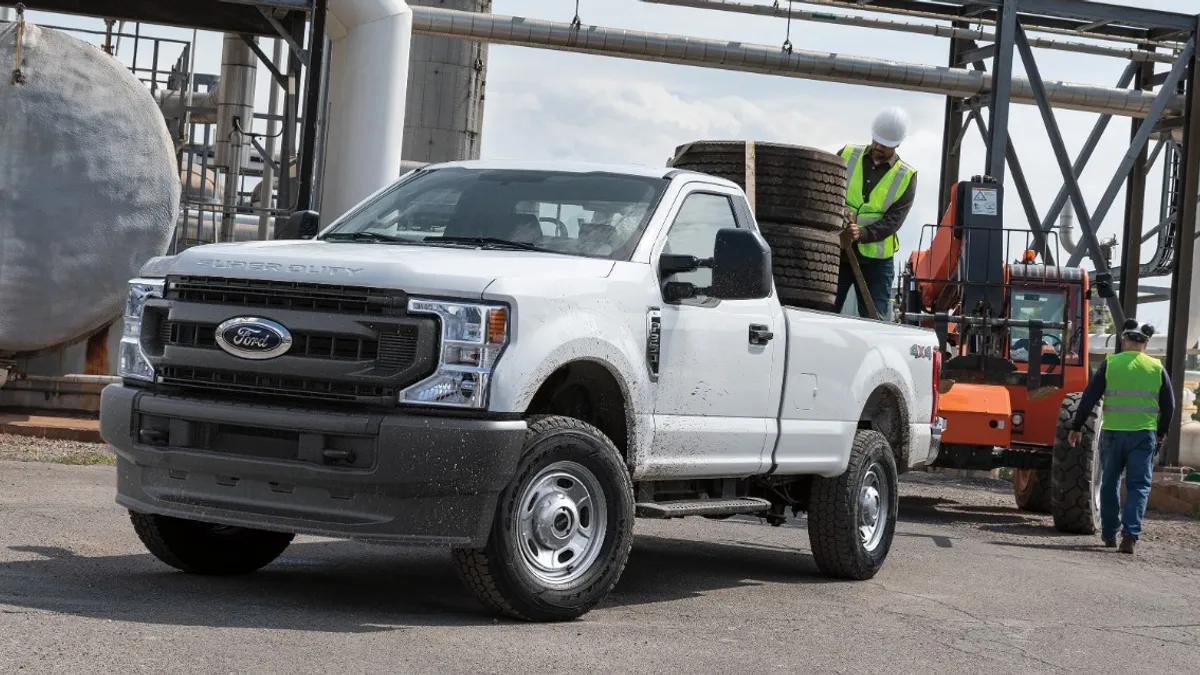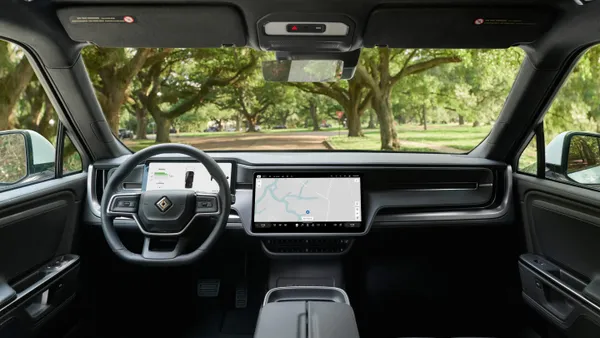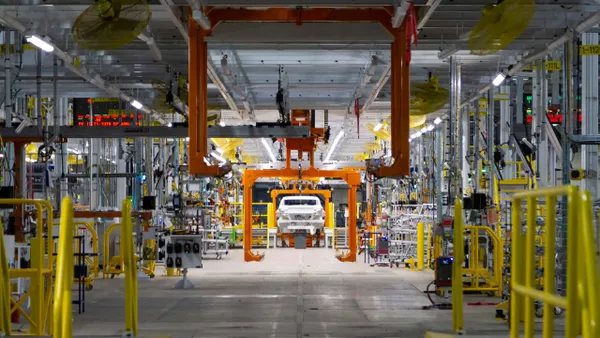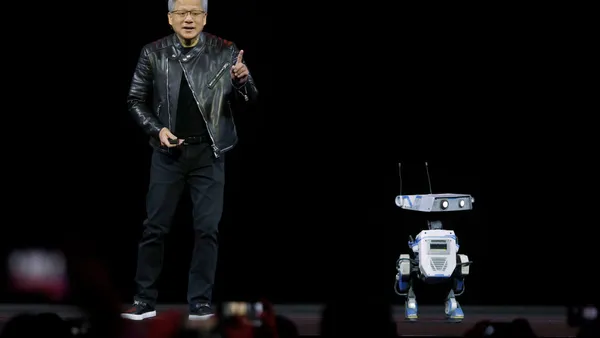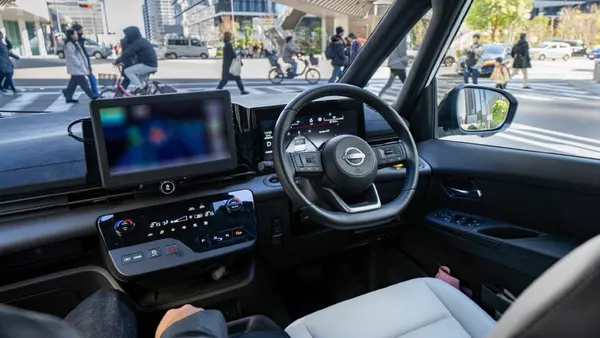Dive Brief:
- Uber Technologies and General Motor Co.’s Cruise unit are teaming up to bring autonomous vehicles to the ride-hailing platform, according to an Aug. 22 press release.
- Launching next year, the partnership will give Uber riders the option to select a Chevy Bolt-based AV for qualifying rides.
- Uber CEO Dara Khosrowshahi said he was “thrilled” to partner with Cruise in the release, highlighting the important role his company could play in the introduction of AVs on a global scale.
Dive Insight:
Cruise still has a ways to go before its vehicles can be considered fully autonomous.
In April, the GM subsidiary resumed mapping operations in Phoenix — a first since California regulators suspended its permits last fall following an October incident in which a robotaxi struck and severely injured a pedestrian in San Francisco. Then, in June, Cruise units began supervised rides with safety drivers in Phoenix and Dallas, shortly before naming Marc Whitten as CEO.
Despite the fresh start, issues continue to plague Cruise, including a recent recall of its entire fleet after a software issue contributed to 10 crashes. AVs equipped with the faulty software may unexpectedly brake if a cyclist or vehicle approaches from the rear, increasing the chance of a collision.
Uber has had its own fair share of AV troubles. In 2018, one of the company’s self-driving vehicles struck and killed a woman in Tempe, Arizona, resulting in the conviction of the safety driver behind the wheel.
But the ride-hailing platform continues to forge ahead with integrating AV technologies on its platform, at least through partnerships.
Last year, Uber also announced a deal with Waymo, owned by Alphabet Inc., to offer autonomous rides in metro Phoenix. It launched autonomous deliveries with the robotaxi company earlier this year.
In addition, Uber recently inked an agreement BYD, a China-based electric vehicle manufacturer, to collaborate on future AVs.
As for its latest deal with Cruise, Uber did not offer additional details on the partnership’s expected timeline, or in which cities riders will have the first opportunity to use the service.



